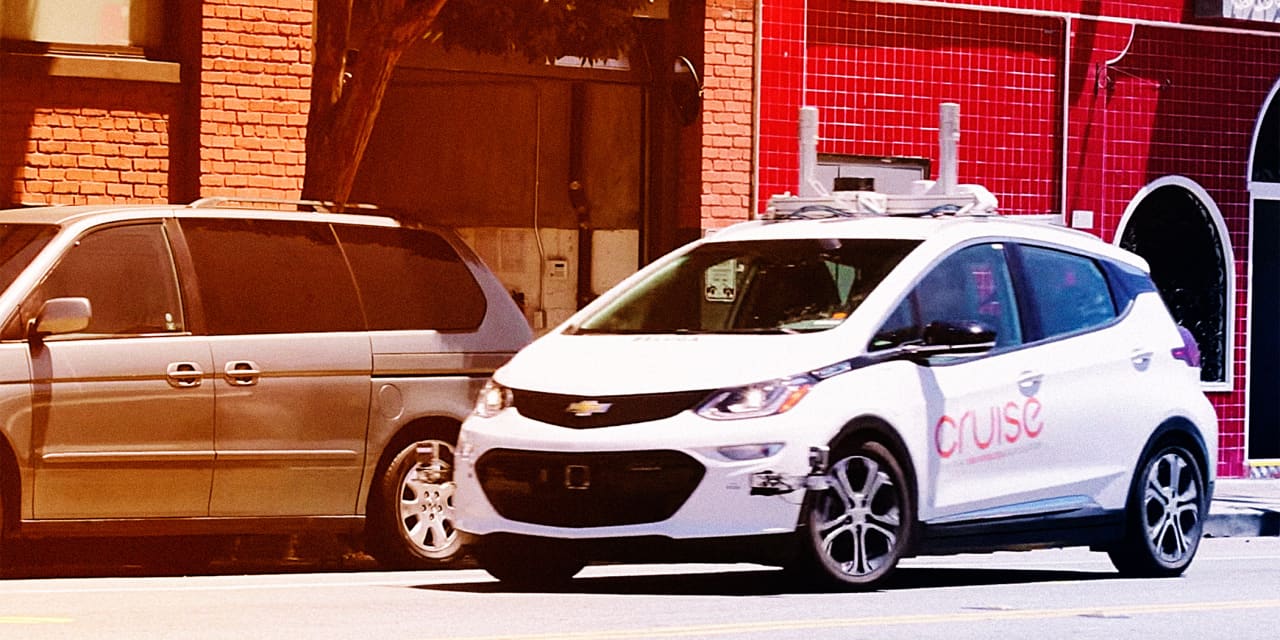The problems at
General Motors
’ robotaxi business are mounting. Key personnel are leaving and hundreds are being laid off. The company said, however, that the latest shake-up was needed to improve safety and rebuild public trust.
While investors have been worried about the future of Cruise and whether GM can hit its lofty robotaxi goals, fewer employees mean narrower losses, which is a relief.
Cruise confirmed that nine employees have departed the company amid its investigation into an incident on Oct. 2, that left a pedestrian injured. The employees leaving Cruise include several “key leaders” across its legal, government affairs, commercial operations, and safety departments, the company told Barron’s in an emailed statement.
In a separate statement on its website Thursday, Cruise said it was laying off 24% of its staff. Cruise didn’t immediately respond to a request for further comment from Barron’s about the layoffs.
The departures follow the company’s initial inquiry into the incident, which led to the suspension of its license in California, and Cruise’s response to it. A person ended up under a Cruise taxi and was dragged several feet before the vehicle stopped, Barron’s previously reported.
Cruise has since halted all its driverless and manual operations and committed to a safety review using third-party consultants.
The developments will be closely watched by GM Chief Executive Mary Barra, who said last week the auto maker will decide on the next steps for Cruise once the investigation has been completed.
GM previously has said Cruise could generate $50 billion in annual sales by 2030. Achieving that aspiration goal given in 2021 looks difficult. Revenue has been coming in at about $25 million a quarter. Cruise has been spending some $600 million to $700 million a quarter.
All that money doesn’t go to running the taxi network. It includes the development of the hardware and software required to make cars drive themselves. The 900 layoffs might save the company some $40 million a quarter. That is only a rough estimate.
Solving the self-driving problem has been difficult to say the least. Cruise has spent some $7.6 billion since 2018. Ford spent more than $5 billion on advanced mobility between 2017 and 2022. Ford shut its Argo self-driving car business down in 2022.
Tesla,
of course, spent hundreds of millions on R&D each quarter. Some of that develops Tesla’s driver-assistance products but the company doesn’t break down spending by program.
Cruise didn’t identify the departing executives, but The Wall Street Journal reported they included David Estrada, a senior vice president of government affairs; Jeff Bleich, Cruise’s chief legal and policy officer; and Chief Operating Officer Gil West, a former Delta Air Lines executive who was brought in to run Cruise’s commercial operations, according to people familiar with the matter.
The clear-out comes after Cruise CEO and co-founder Kyle Vogt resigned last month, followed by the company’s other co-founder Daniel Kan a day later.
“We are committed to full transparency and are focused on rebuilding trust and operating with the highest standards when it comes to safety, integrity, and accountability, and believe that new leadership is necessary to achieve these goals,” a Cruise spokesperson said.
Cruise intends to restart driverless operations in just one city initially but hasn’t given a timeline for when this will happen.
GM stock was up 45.1% on Thursday.
Ford
rose 5.3% and
Tesla
climbed 3.9%, while the
S&P 500
and
Dow Jones Industrial Average
were both up about 0.2%.
Narrower losses at Cruise losses were one factor likely helping GM shares. The Federal Reserve’s decision not to raise interest rates on Wednesday also helped. GM’s Cadillac division also announced a new EV that will hit roads in 2026. It’s call VISTIQ. That’s another bit of news investors were digesting on Thursday.
Write to Callum Keown at [email protected]
Read the full article here




